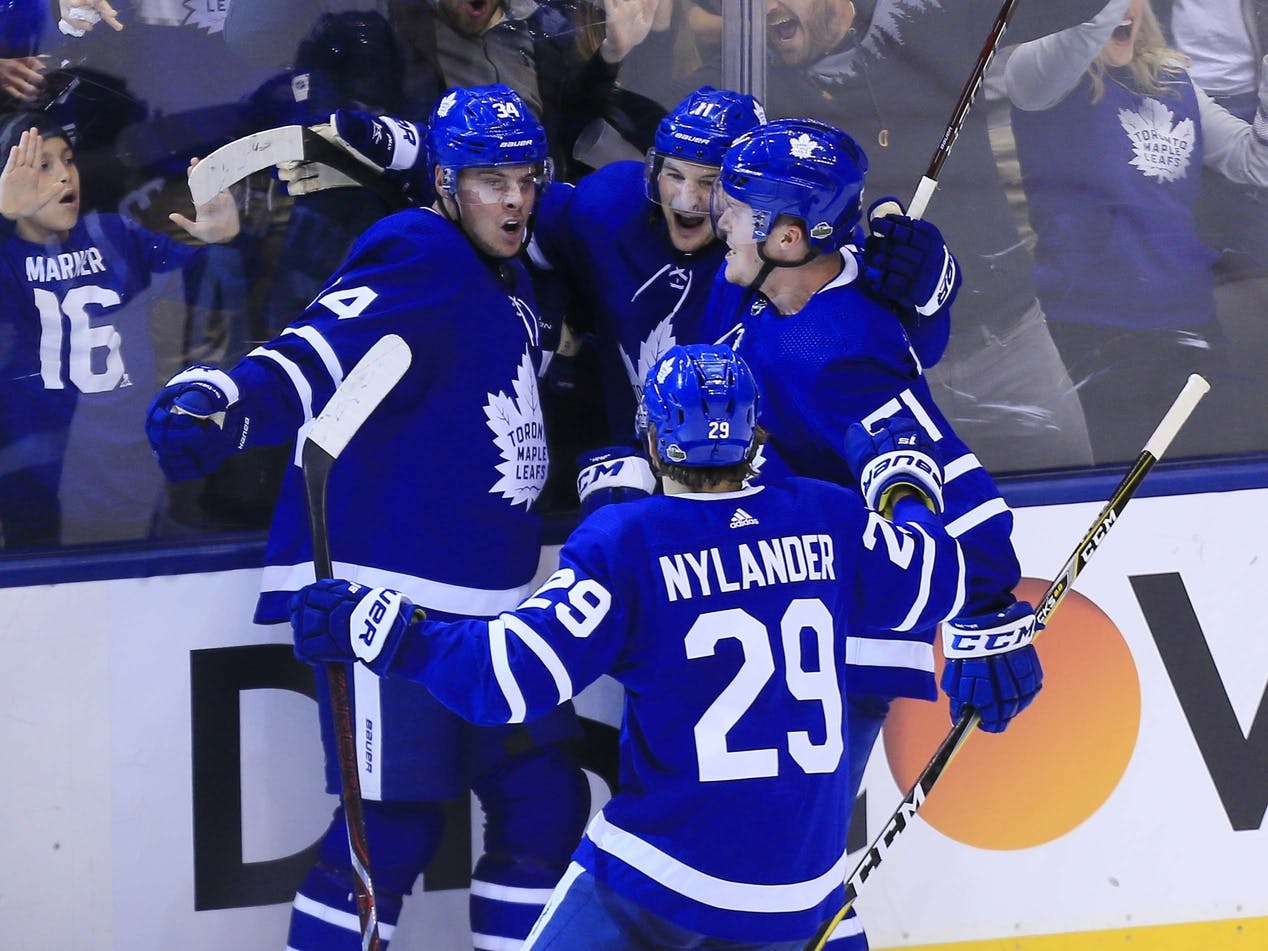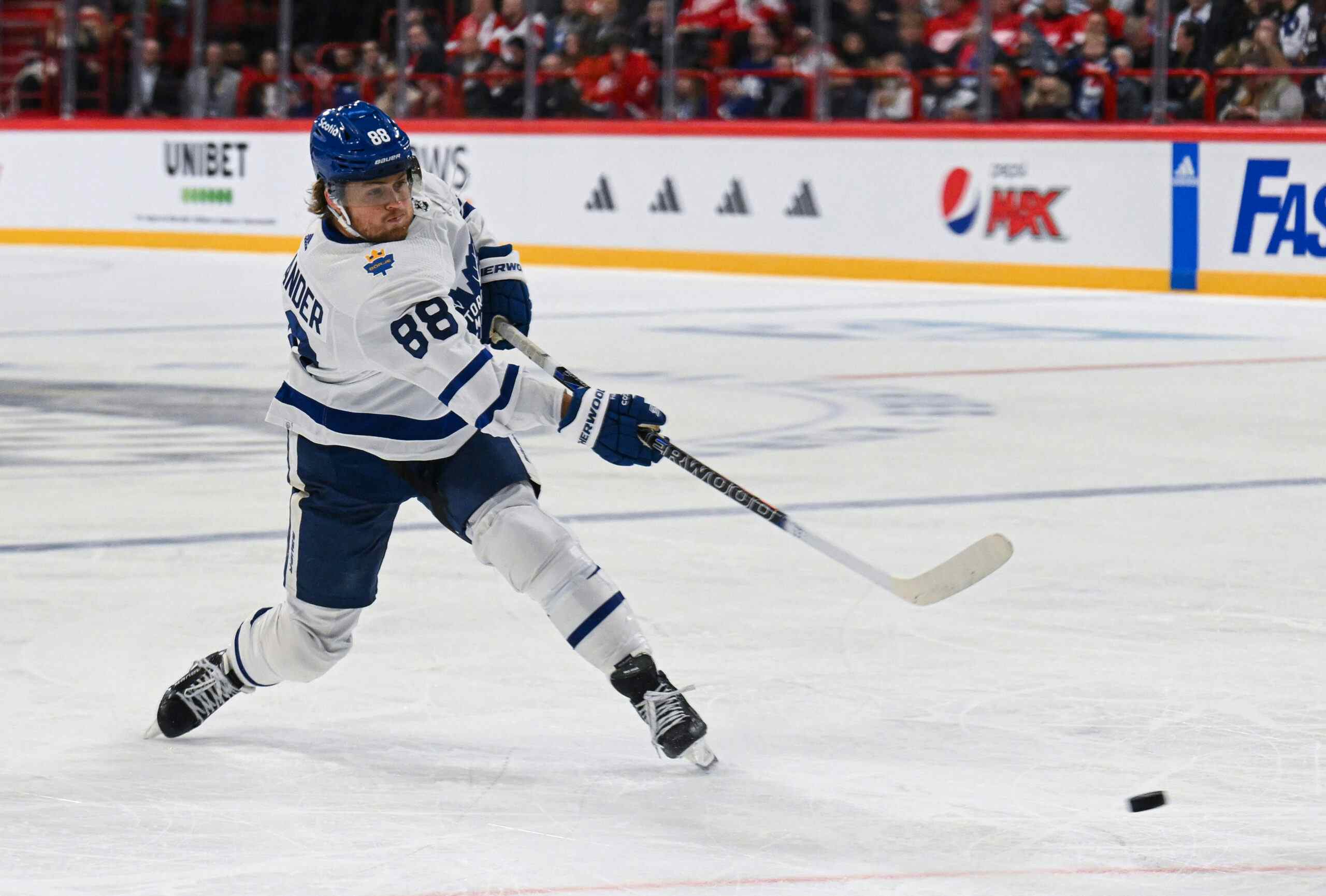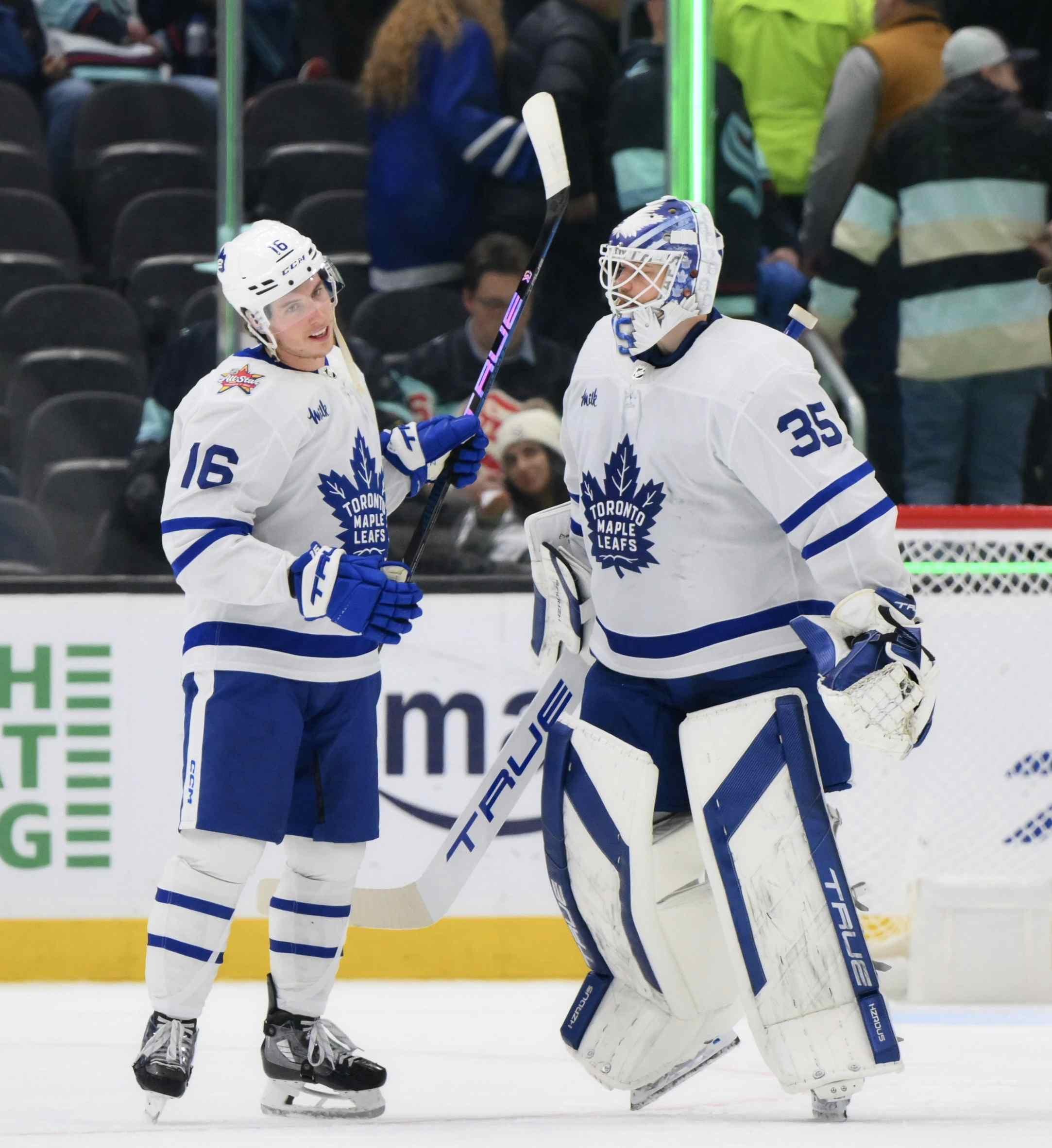The gambles that didn’t pay off for the Leafs this season, and one that did

By Ryan Fancey
4 years agoAround these parts everyone is still in season postmortem mode and will be for a little while longer until we can see the light at the end of the tunnel that is the entry draft. There’s been a lot to cover, mainly regarding the questions about the coach, and how this roster is going to look next season while facing down a cap crunch, some RFA decisions, and a notable departure in Jake Gardiner.
There’s a lot to look forward to.
But looking back, there are some risks Kyle Dubas took in his first season as the Leafs’ sole GM that perhaps don’t look so good in hindsight. This isn’t meant as a hard swipe at management or anything; You take calculated risks, sometimes they work out and sometimes they don’t – that’s essentially what managing a sports club is all about. The process matters most, and I think the Leafs are fine in that regard. You get lucky or you get unlucky, and you try as much as you can to take luck out of it or make your own, however you want to see it. Hopefully diving in to a few of these gambles the Leafs have made in the last 12 months gives a nuanced look at what went wrong or right, and provides a little insight as to how much luck probably factored in.
There is some criticism to go around.
What went wrong
The Matthews and Marner contract negotiations
Last summer, the Leafs’ window for trying to re-sign pending RFAs Marner and Matthews opened up, but unsurprisingly the focus for Dubas was on Nylander — you know, the guy set to actually miss games due to being without a contract at all.
Now, it goes without saying that negotiations are two-sided and we don’t know about the level of interest or urgency in getting something done from the players’ sides, but the story goes (at least from what I’ve read/heard) that Toronto was, to some degree, fine with kicking the can down the road. They were content to bank on Matthews and Marner not absolutely blowing the doors off this season and pricing themselves out. “If you have time, use it” Kyle Dubas said he learned from Lamoriello.
That gamble couldn’t have gone worse, as Matthews put up ungodly goal totals to start the season, and Marner, strapped to Tavares’ wing, poured in points at an almost-Art Ross clip. Who could’ve guessed that JT, known primarily for elevating then-unknowns like Matt Moulson to absurd point totals, could have the same effect on Marner? Either way, the Leafs’ front office ended up with a bit of egg on its face, handing out a monster of a contract worth $11.634-million AAV to Matthews on a relatively short term that walks him right to free agency, and now we’re stuck waiting on Marner while reports surface that he’s looking to become the highest-paid winger in history.
The Leafs may very well have all of Nylander, Matthews, and Marner signed going into next year, but I can’t see any world in which this whole process can be looked back on favourably.
Sparks vs. McElhinney
This gamble is the one that continually grabbed the most headlines throughout the season, which is hilarious since it’s a backup goalie battle, but whatever. The Leafs did the smart and best asset-controlling move at the beginning of the season by keeping AHL graduate Garret Sparks and moving on from aging veteran Curtis McElhinney, losing the latter to waivers. The gamble here was hoping Sparks, on the heels of being the minor league goalie of the year, could hit a respectable level for a backup at the big level, while the assumption was McElhinney probably couldn’t keep up his absurd late-career numbers in the medium term.
While the stakes were low, this situation played out in a way that’s so bizarre it’s almost impossible to overstate. McElhinney did well in Carolina while the Leafs, a team in contention and hoping to keep Freddie Andersen fresher for the playoffs, couldn’t really play their backup goaltender with any amount of confidence. Things got so bad near the end of the season that Sparks was mock cheered on home ice (both the Toronto and Ottawa rinks) and essentially kicked off the team and sent to “find his game” or whatever with a week left before the playoffs.
Even in the Toskala/Gustavsson years I don’t think anything goaltending-related played out this strangely. I’m not even mad, it was almost impressive.
Standing pat and not acquiring a right-handed defenceman
It’s hard to try to quantify how serious the risk here was, but it’s at least notable. Going back almost two years, every trade-related article or television/radio segment regarding the Leafs has been about the weakness on the back-end, specifically the lack of a true right-handed top pair option. Actually “top pair” may be asking too much, a competent one would have eased enough minds.
Look, the Muzzin deal was a homerun for the Leafs, but as Babcock quickly pointed out when he was acquired, he doesn’t shoot right. Even with that huge trade to Muzzin in the fold, the Leafs had one right-handed option who could (arguably) play top four minutes: Nikita Zaitsev.
So yeah, the criticism around management “not doing anything at the trade deadline” is unwarranted based on the Muzzin addition weeks prior, but they still didn’t address the right side of their defence in a meaningful way, and that talk goes back as far as last summer. The team thought they could just make things work with a group built piecemeal, but a weak spot remained and the whole group felt disjointed even when their play elevated a bit during the playoffs.
In the middle
Nylander stalemate
This one isn’t necessarily on management. It ended up working out poorly for both sides as far as this season goes and the lasting optics around this negotiation, but hopefully the longterm effect of it is a big positive, which was always the way the Leafs had to look at it anyway.
This was just sort of an unfortunate situation all round as it pertained to 2018-19, but it is what it is. The layoff and slow start, combined with some brutal luck and a media firestorm around Nylander was certainly a huge negative and will have some lasting effects, but in the end the Leafs did get him at a reasonable number at $6.9-million AAV for the long term.
Turning the page on this season will be important, and we already looked at how the focus of this negotiation related to the ones for Matthews and Marner, but in a vacuum this move was okay and I don’t believe the team is taking much risk moving forward with Nylander. His production will return and this contract will look fine, if not great, as it clicks along.
What went right
Tavares contract
There isn’t much to say about Tavares other than this season couldn’t have gone better for him after he broke the league in half last summer by signing in Toronto. And make no mistake, this was a gamble, even if it did seem like a no-brainer signing for the team. Bringing aboard an 11-million dollar cap hit you may have not been planning on has a rippling effect and makes management’s job harder around the margins – we’re seeing that now. There’s also the fact that any long term deal like this that takes a player into his thirties has the potential for its value to sink big time.
The pressure on Tavares going into the season couldn’t have been heavier, the spotlight any brighter, but he delivered and then some. Tavares destroyed his previous career high in goals by almost notching 50 (he finished with 47), landed a career high in points, and provided a ton of nice highlights along the way. Hat-tricks, a four-goal game, wrecking the Canadiens in overtime. He was top billing all the way through. And the consistency; It never seemed like there was a game to look back on and say “Tavares looked bad tonight”.
The Leafs probably could have used more production from his line in the playoffs, but overall their performance wasn’t bad, and I think most fans would say they were surprised by how much stronger Tavares was defensively than originally thought when he signed. All in all, a fantastic season and a great way to kick off a contract that’s going to be scrutinized from start to finish.
What’s next
As far as responding to how some of these risks played themselves out, Dubas has a lot of work to do. The huge issue hanging over everything is obviously the Marner contract, and with how things have gotten sour in the media already, that negotiation could get much uglier and potentially push the Leafs to some hard decisions on moving players in and out. By only now communicating that this is their biggest priority, it really seems like the Leafs’ front office is admitting to some degree that the sense of urgency wasn’t quite there to this point. Letting Marner bet on himself has put them in a bind. It’ll be a wild summer.
Aside from that, the Leafs have finally got to address the right-shot defence problem. Running it back with Zaitsev and hoping Dermott can fill in over there on his off-hand is just not good enough (we can assume Hainsey is gone). There have been some rumblings that Dubas was working on a major trade leading up to the deadline that could be revisited (perhaps with the Hurricanes), so we’ll see where that goes. But yeah, this needs to be shored up.
The Nylander situation will work itself out. He’s too talented and was far too unlucky for things not to bounce back his way next season. That contract and his overall play isn’t something that should worry anyone, though I realize I’m yelling into a void of armchair GMs who want to see him moved now for nothing. [Ain’t going to happen, sorry.]
Lastly, the backup goalie situation played out about as poorly as you could have imagined, so it’ll be tough to see Sparks coming back. And I say that as someone who doesn’t think he’s as bad as he showed this past season. Maybe he does have somewhat of a return-to-form in him, I just can’t see the Leafs risking it again and trotting him out there in front of a fanbase that’s 100-percent turned on him. They’ll probably look elsewhere for a vet or give Hutchinson another whirl, though landing someone who can take a real chunk of starts away from Andersen might also be nice.
Like I said at the top, and will continually say, the Leafs are in good hands overall. The substantial additions – Tavares and Muzzin – they’ve made in the last year have markedly improved the roster, at least on paper. Things just spun a little out of control in other areas, and some risks, no matter how tiny, could not have gone worse. Here’s to making smarter, or perhaps luckier, bets for 2019-20.
Recent articles from Ryan Fancey





